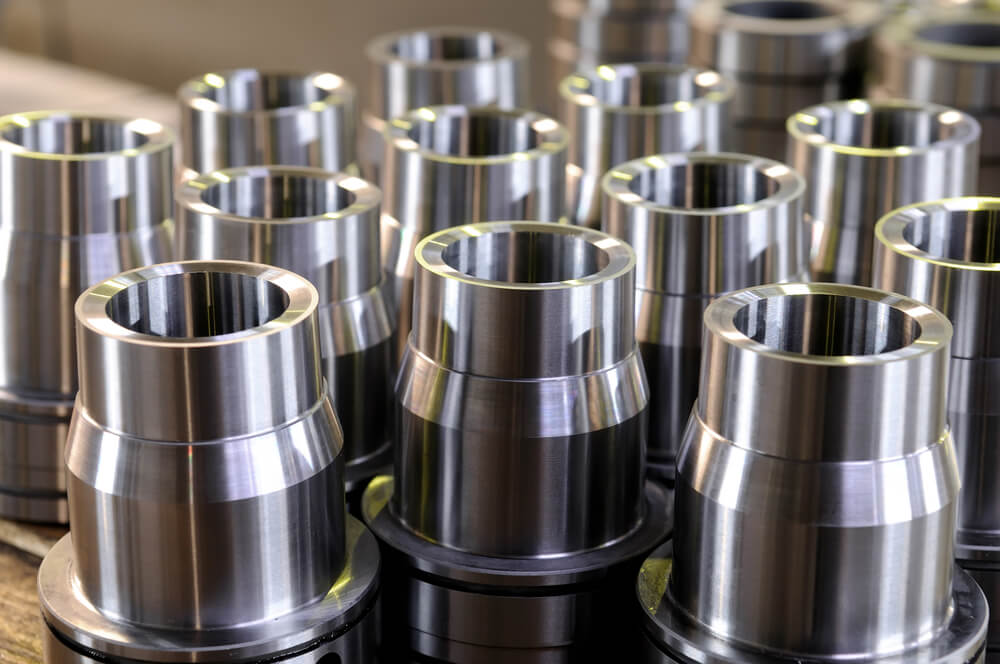The term CNC machining is applicable in different machining applications. CNC means Computer Numerical Controlled, which means a machine's programable features that permit it to do many tasks with little human control. The term CNC machining is the Component fabrication process using CNC controlled machines. It's a term that describes several subtractive manufacturing methods where materials get removed from stock workpieces or bars to give finished components.
You will meet five different CNC machining types done by five different CNC machine types. These methods get used in several applications over a wide spectrum of companies, including aerospace, hydraulics, firearms, and industrial. It's possible to machine different materials, including plastics, metals, wood, composites and plastics.
CNC machining parts gives more benefits than machining without programable capabilities. The reduced time cycles, multiple features and improved finishes can be complete, improving consistency and quality simultaneously. Its relevant to high and medium volume needs where complexity and accuracy are essential.
Turning machines and CNC lathes
Turning machines and CNC lathes get characterized by the machining process's ability to turn (rotate) materials. Cutting tools for the machines get fed in linear motions, rotating bar stocks, and removing materials around the circumferences until desired features (diameter) are achieved.
CNC lathes subsets are the Swiss CNC lathes. With the Swiss CNC lathes, the material bar slides and rotates axially via guide bushing (holding mechanism) in the machines. It offers more support for materials as our tooling machines component features to give tighter and better tolerances. Turning and CNC lathes machines can create external and internal features on components. They include drilled holes, broaches, bores, slots, reamed holes, tapping, threads and tapers. Components from turning centers and CNC lathes include bolts, shafts, screws and proppets.
CNC milling machines
The CNC machine milling gets characterized by abilities to rotate cutting equipment while holding a block stationary or material workpiece. They produce a wide range of shapes, including face milled characteristics like flat, shallow cavities and surfaces in a workpiece. They also produce peripheral milled characteristics like deep cavities (threads and slots). CNC machine milling produces rectangular or square components in shape with several features.
CNC laser machines
These machines have pointed routers with focused laser beams to slice, engrave or cut materials. The lasers heat materials to vaporize or melt, creating cuts in the materials. Materials are in sheet formats, and laser beams move forth and back on the materials creating precise cuts.
The process produces wider design ranges than conventional cutting (turning centers, lathers, mills). It produces edges or cuts that don't need extra finishing processes. The CNC laser engraving is often used in component decoration and marking machined parts.
CNC EDM (Electrical Discharge Machines)
EDM uses a controlled electrical spark in manipulating materials into the desired shapes. It’s also referred to as spark eroding, spark machining, wire burning or die sinking. Components get placed under electrical wires, and machined gets programmed to remit electrical discharges from the worse to give intense heat. The materials flush away or melt to create desired features or shapes.
CNC plasma machines for cutting
You can use these machines to cut metals. They use high power plasma torches controlled by computers. The torches melt materials to create cuts in them. Materials to work on are steel, aluminum, brass, copper and stainless steel.
Conclusion
CNC precision machining offers a wide range of production abilities for parts and finishings in the production environment. You need to choose a process that will suit the material and component you need.


